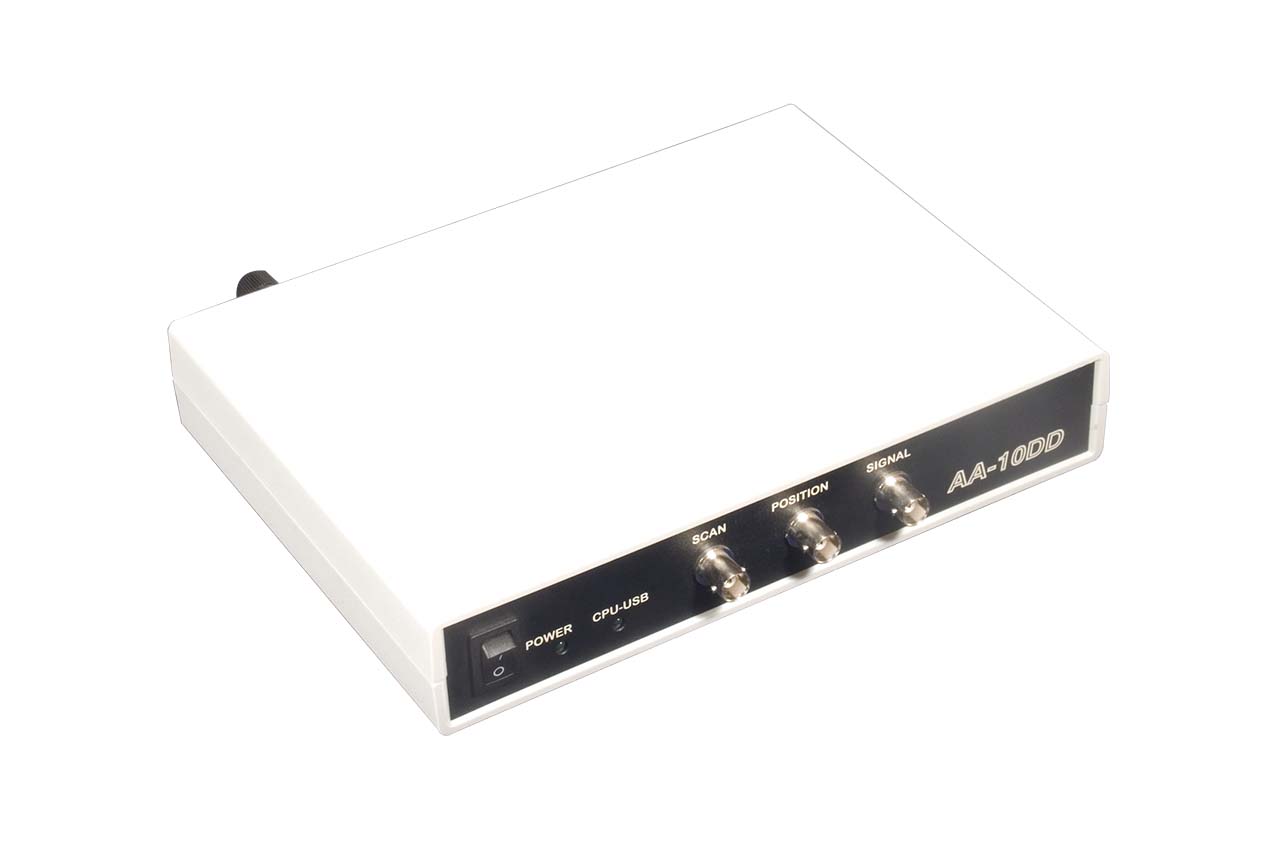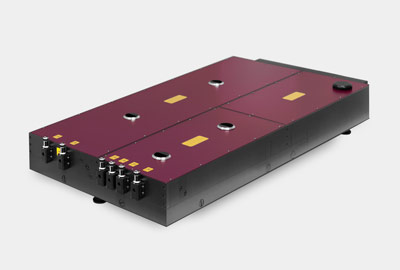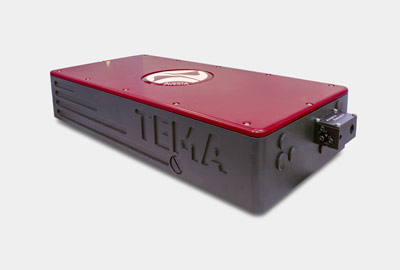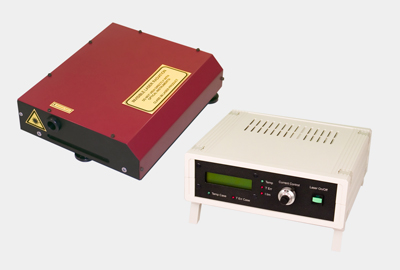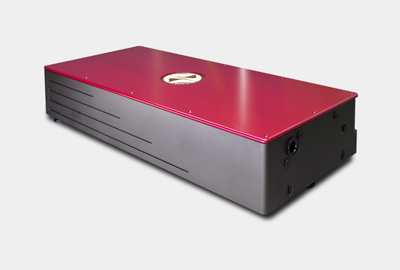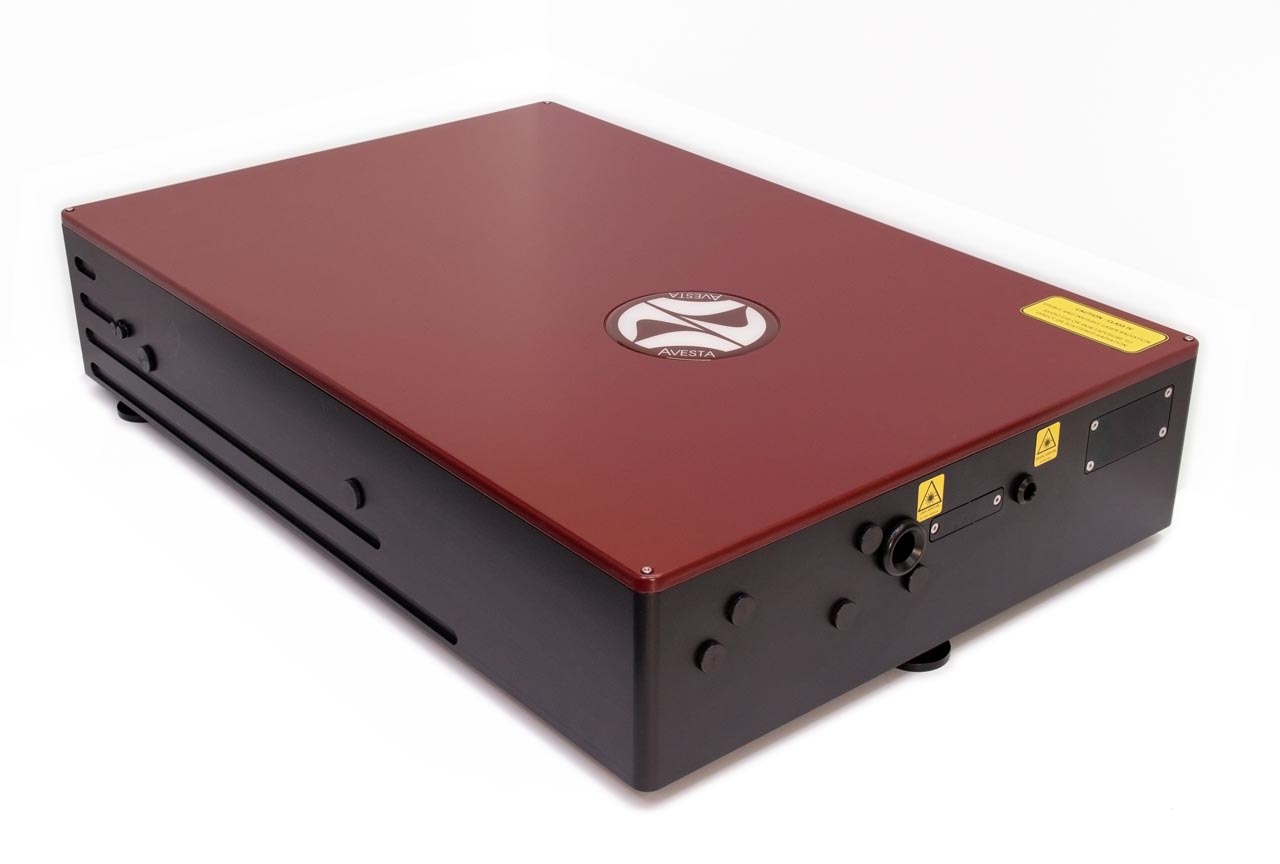AA-M. Scanning Real-Time Autocorrelator for Microscopy
| AA-M | |
| Possible full wavelength range* | 450-2000 nm |
| Subranges* (exchangeable photodetectors/beam splitter sets) |
V**: 450-700 nm R1: 700-1300 nm R2: 1300-2000 nm |
| Input pulse duration range | 20 fs -12 ps |
| Number of photodetectors for one range | two (internal and external for sample position) |
| Input pulse repetition rate | >10 kHz |
| Typical sensitivity (Pav*Ppeak) | 100 mW2 |
| Input polarization | linear, horizontal (vertical upon request) |
| Scan rate | 0.1-20 Hz |
| Linear distortion | <1% |
| Collinear (interferometric and intensity) autocorrelation | yes |
| PC connection | USB, Windows PC acquisition and analysis software is included in the standard package |
| Necessary equipment | Windows PC platform or an oscilloscope |
| Signal source and detector | Two-photon conductivity in semiconductor |
| Dimensions | 210x164x132 mm (optical unit) 225x190x45 mm (control unit) 70х55х16.5 mm (external photodetector) |
| * - the autocorrelator may cover one, two or all three subranges with exchangeable photodetectors/beam splitter sets (1, 2 or all 3 sets may be included in the package depending on required laser source specifications); ** - the 450-700 nm subrange may only be purchased with the main unit order. |
|
The AA-M provides two simultaneous measurement points: one at the focal plane of the microscope and the other being the point where the optical head of the device is placed, i.e. somewhere before the microscope input. The comparison of the pulse duration value obtained in these two measurements determines the pulse broadening introduced due the dispersion of the microscope’s optical elements. In most cases of application of ultra-short pulses in microscopy it is essential to characterize the temporal and spatial profile of the beam in the focal spot of the microscope. These measurements are vital for any experiment as the shorter is the pulse the higher is the efficiency of the nonlinear imaging process (2-photon excitation) and less excitation energy is needed for successful experiment. Such beam characterization is also necessary when determining exposition of the sample. It ensures image optimization and correct intensity level estimation, as incorrect values may even lead to sample damage.
The autocorrelator may cover various wavelength ranges, as well as combine the ranges by using 3 interchangeable sets of photodetectors and optics. Two separate ranges can also be covered upon request. Input pulse duration ranges from 20 fs to 12 ps for easy monitoring of different laser systems.
The device features USB interface and can be easily hooked up to a PC with Windows OS. The software is supplied with the device and comprises several useful tools. The acquired pulse duration data can be visualized, stored or exported to a .txt or .dat file. Autocorrelation function and final FWHM pulse duration in femtoseconds are calculated and displayed in real-time. Moreover, Gaussian or sech^2 fitting options are enabled, intensity function may also be observed. The statistical viewer feature allows the comparison of data acquired from several separate pulse measurements.
- Biological Imaging
- Time-Resolved Ultrafast Studies
- Laser Systems Design, Integration and Amplification
- Ultrafast Laser Diagnostics, Accessories and Components
- Femtosecond Oscillator Pulse Duration Measurement
- Femtosecond Pulse Duration Measurement and Dispersion Characterization
- Comparison of Dispersion Values, Determining Dispersion of Various Optical Elements
- Femtosecond and Picosecond Pulse Duration and Near Contrast Measurement
- Femtosecond and Picosecond OPA Pulse Duration and Near Contrast Measurement
Related products
Latest News
Ti:S oscillator with up to 3 W output power at 100 fs
We have ramped up the maximum available output power for the TiF-100 series to more than 3 Watts at 800 nm, 100 fs, 80 MHz. The tuning range has also been extended to 720-950 nm, while an optional modification that covers 850-1040 nm is also available. The system features a high-power low-noise integrated DPSS laser […]
TiF-100ST-F6 femtosecond Ti:S oscillator with Frep locking for multiphoton microscopy at CANDLE, Armenia
The TiF-100ST-F6 femtosecond Ti:S oscillator with a built-in pump laser, also equipped with the ALock PLL electronics unit for pulse repetition rate locking to an external RF source has been installed at the Synchrotron Research Institute’s CANDLE facility in Armenia. The setup has been developed and commercialized during the joint Russia-Armenia project supported by FASIE (Innovation […]




